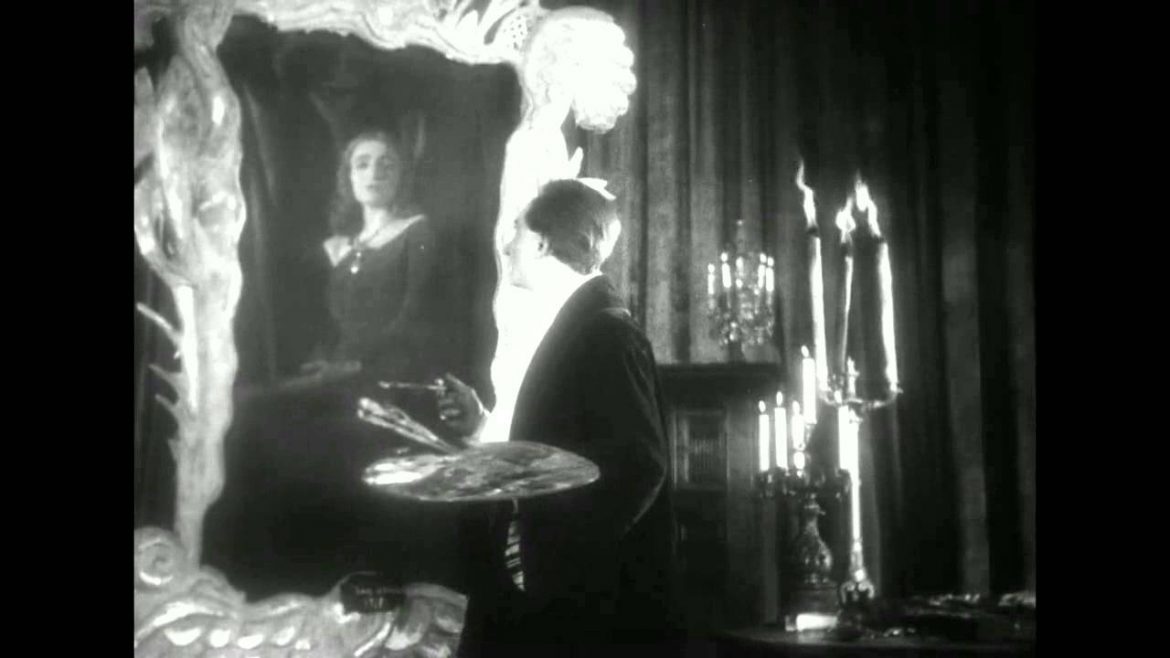Though not the first of his stories to appear on film, The Fall of the House of Usher is perhaps Edgar Allan Poe’s most well-known Gothic tale, and arguably the best suited for cinema. Its central themes — the embodiment of individual interiority in physical architecture, the more or less haunted house, the living grave, the unreliable narrator, the tension between what is seen and what is felt, the rampant doublings of character — all seem appropriate to an imagistic treatment.
In 1928, French director Jean Epstein (and co-writer Luis Buñuel) explored all this and more, delivering a haunting, occasionally ridiculous post-Freudian shadow-show. As a fixture of an advancing avant-garde that preferred Surrealism over Impressionism, Buñuel would go on to dismiss Usher and Epstein more generally, but the film was widely celebrated in cinephile circles on release, with Henri Langlois deeming it “not only the ultimate expression of ten years of experimentation but their justification.”
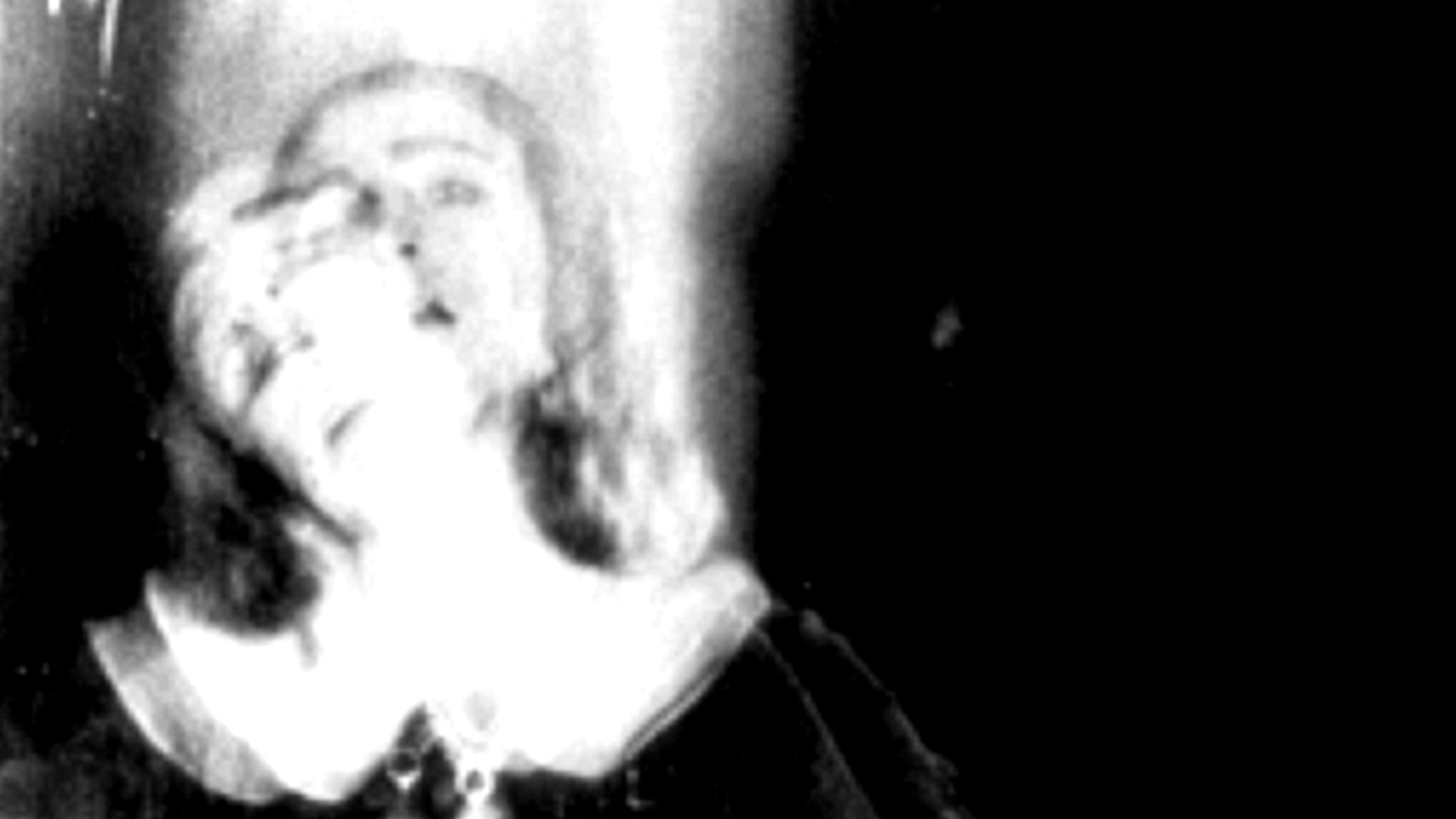
The story is famous but bears repeating, if only to showcase the liberties taken and interpolations enacted by Epstein and Buñuel.
In Poe’s telling, our narrator, a childhood friend of Roderick Usher, is summoned to his estate. Usher complains of illness, both his own and that of his sister Madeline. The house, he maintains, is alive and sentient. His friend attempts to distract him with painting and art, but the pervasive sense of madness holds sway. Madeline dies, or so we are told, and is interred in the family tomb, though our narrator can’t help but observe her lifelike aspect even in death. Features of the house begin to take on characteristics of Roderick’s paintings, and weird noises occupy them both. Eventually, Madeline herself returns from the grave during a storm, to the friend’s shock but seemingly not to Roderick’s. The siblings die together as the narrator flees, watching in horror as the house itself is cleaved in two.
The film retains much of this, at least in broad strokes. But there are significant differences.
Here, Roderick (Jean Debucourt) and Madeline (Marguerite Gance, wife of fellow director Abel Gance, who Epstein admired) are married, a change in the narrative that could either signal Epstein’s more conventional Romanticism or a literalization of Poe’s barely-subtextual incest theme. Madeline also plays a much more central role in film than story, in which she barely appears in the flesh. Instead of a basement tomb, Roderick Usher, his friend, and a valet convey her out to the country for burial. Poe’s house-bound claustrophobia is somewhat mitigated by such excursions.
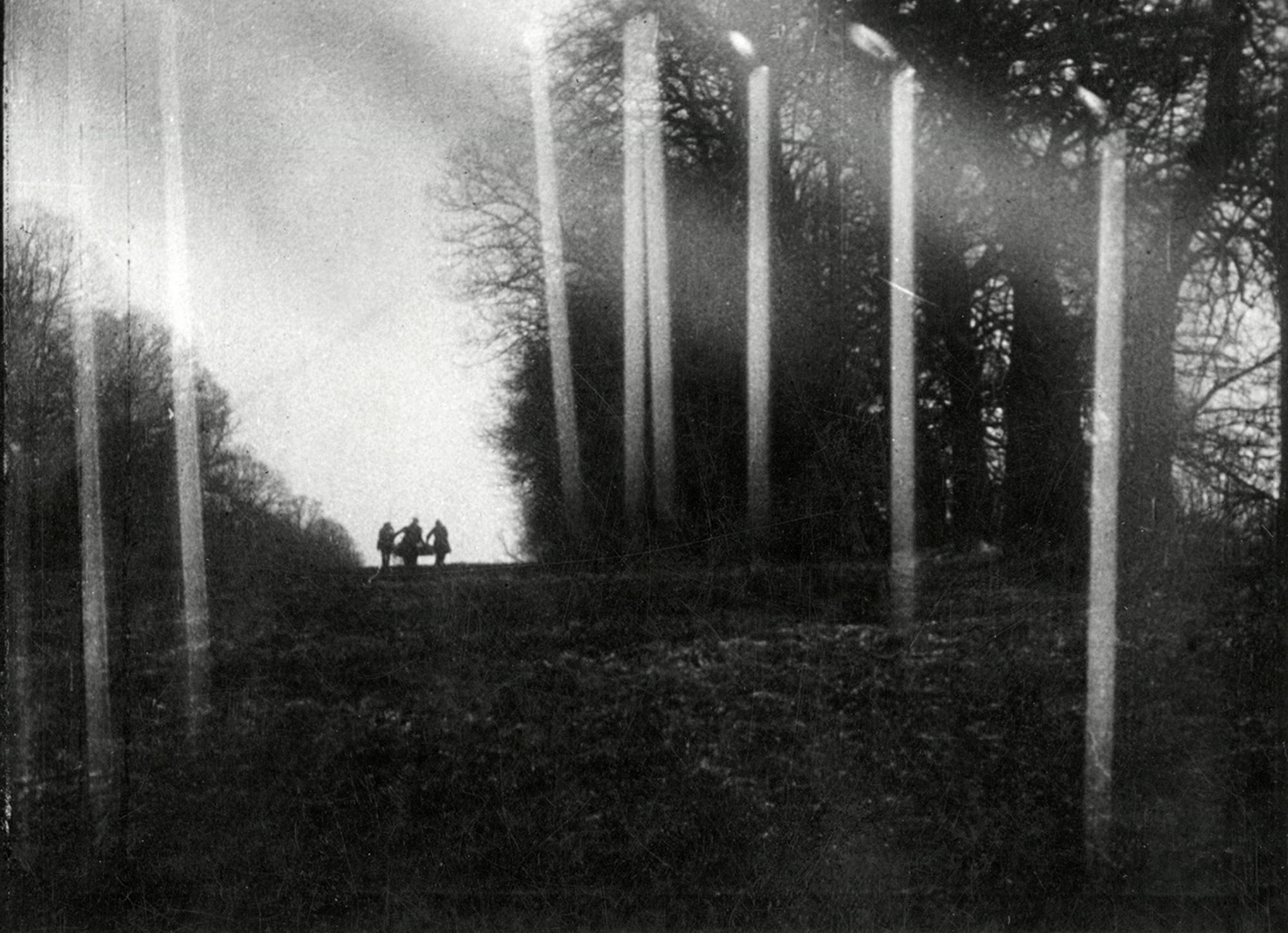
The most crucial distinction, however, is the role of painting, which occupies something like a reverse-Dorian Gray role in the film. As Darragh O’Donoghue notes:
The most obvious break is in the interpolation within Usher of motifs and narrative events from other Poe stories, most obviously the story-within-the-story of “The Oval Portrait” (1845), in which an artist’s painting of his wife becomes increasingly life-like in proportion to her wasting away and eventually dying.
Epstein films the early sequences of Roderick’s portraiture of his wife as a kind of artistic mania; indeed, Usher repeatedly assures anyone who will listen that “Here, here is where she lives!” Debucourt is filmed as though possessed by the beauty, not of his wife, but of his image of her — he aggressively dabs at his palette, single-mindedly securing her in “the frame” as the real Madeline fades, until eventually relegated to a murky, living grave outside.
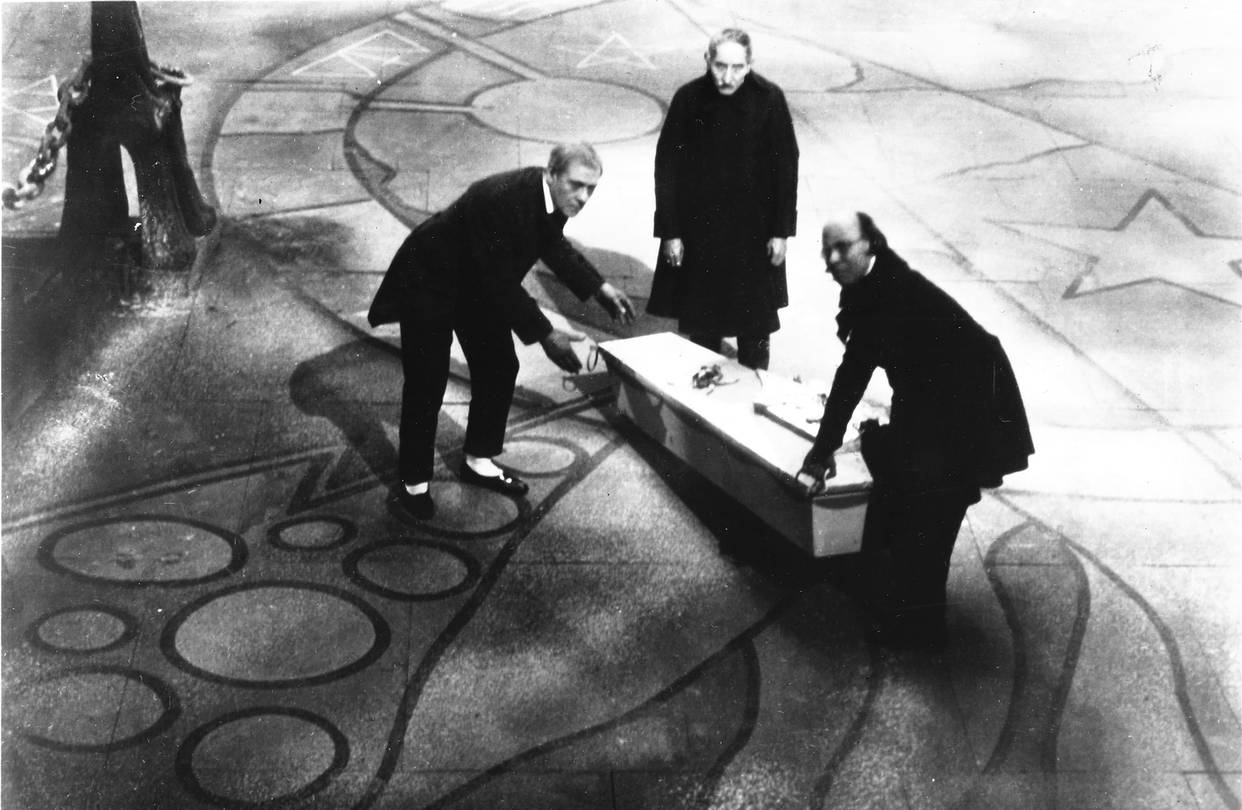
Throughout the film, Epstein contrasts Roderick Usher with every other character through technically distancing sleights of hand. Certain scenes find only him in slow-motion while reverse-shots move at a normal speed; other sequences form montages of individual images (his hands, a billowing curtain, a grandfather clock that never seems able to strike midnight, a broken guitar string, a fast tracking shot down a hallway) that seem to indicate he either controls the house with his mind, or the house controls him.
It can be enormously unsettling. O’Donoghue finds that the contrasts can make The Fall of the House of Usher “a chore to sit through,” but I had the opposite reaction. There’s something gripping and uncanny about the whole enterprise. It’s a cliche to refer to silent films as, in and of themselves, “oneiric” and dreamlike solely on account of their flickering uncanniness, but Epstein emphasizes this to such a degree that it can’t be ignored.
His Usher is a collection of interrelated visions caught between worlds, and — with Debucourt frantically rocking back and forth in his chair as the world collapses — its vision of attempts at masculine control is startling. (Did Andrzej Żuławski have Usher in mind 53 years later, when he set Sam Neill in his lunatic rocking chair in Possession, another film about shadowy doubles and the vagaries of control? A question for another day.)
The Fall of the House of Usher, the first film screened at the Cinémathèque Française founded by Langlois and Georges Franju, would mark one of Epstein’s final flirtations with this variety of the early avant-garde, and France’s:
[T]he period of avant-garde experimentation in France was about to end, marked by the release of Buñuel’s Surrealist L’Âge d’or in 1930. Sound equipment was too expensive for these independent artists and American-style story films became the accepted standard for producers and audiences alike (…) Epstein had already begun to explore new territory, calling the craft of acting primarily “a school for lies” and advocating for realism in films.
Buñuel and Salvador Dali would release Un Chien Andalou the following year, and Surrealism would eclipse the Impressionist impulses pioneers like Epstein were already abandoning. Years of war would then change everything again (the Jewish socialist Epstein himself was imprisoned by the Gestapo and would only make a few more films after 1944).
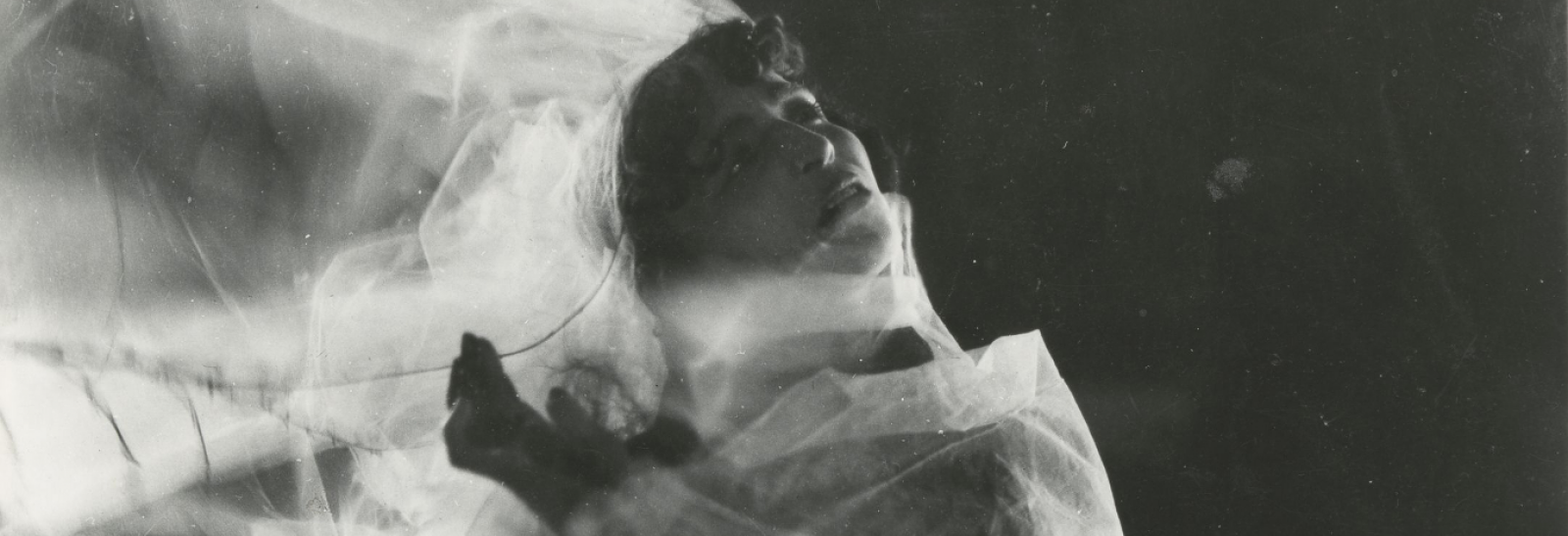
But The Fall of the House of Usher remains a landmark, as haunting and personal an adaptation as you could want, a synthesis of influence and innovation. If its High Art aspirations look quaint and overly Romantic now, there’s no escaping its weird power.
There are times when I think that of all the genres, the horror film most misses silence. The Western benefited from dialogue, and musicals and film noir are unthinkable without words. But in a classic horror film, almost anything you can say will be superfluous or ridiculous. Notice how carefully the Draculas of talkies have to choose their words to avoid bad laughs. The perfect horror situation is such that there is nothing you can say about it. What words are necessary in “The Pit and the Pendulum”? “The Fall of the House of Usher” resides within its sealed world, as if–yes, as if buried alive.

